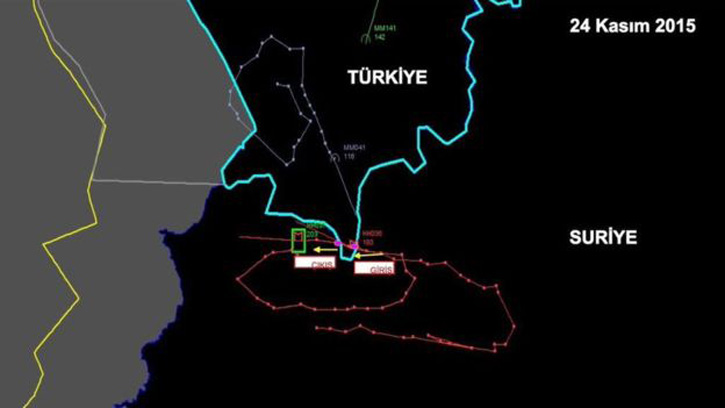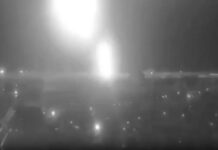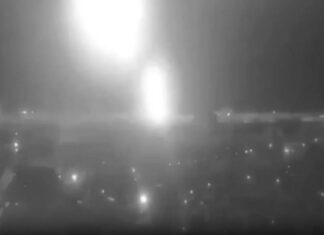A Russian Su-24 strike aircraft was shot down today by Turkish Air Force F-16s. The Turks claim the Russian plane was intercepted on the Turkish side of the Turkish-Syrian border. The Russians say it was a deliberate attack against a Russian jet flying south of the border. According to Turkish authorities, the intruder was engaged by an air-to-air missile fired by an F-16 after ignoring repeated, internationally-recognized signs to identify itself and turn back. Defense officials in Moscow have confirmed the loss of one of their jets operating in support of the Syrian regime. The aircraft was at an altitude of 6,000 meters when it was hitby the Turkish missile.
[ismember]While the Turks are rightfully protecting their airspace, following claimed incursions by Russian planes and cruise missiles, in this case they seemed to be ‘trigger happy’ in their decision to open fire. As they knew exactly to whom the aircraft belonged and what the implications would be, it seems the Turks wanted to deliver a firm message to Moscow about their ‘uninvited’ participation in the Syrian Civil War and their support for the Assad regime, which Turkey, as well as other Arab nations, would like to see ousted as soon as possible.[/ismember]
Russian military sources confirmed that a two-jet formation was in the area, returning to their operating base at Hmeymin after a combat mission against ISIS. One of the jets turned back, while the other was shot down. Both crewmembers ejected from the burning plane. The pilot was shot by Syrian Turkmen rebels, the navigatir escaped and was rescued by a daring Combat Search and Rescue operation that lasted 12 hours. One of the SAR helicopters sent to rescue the pilots took fire from the ground and forced to perform an emergency landing. Once landed, the helicopter was hit again by a TOW guided mossile, killing one of the marines on board.

Russian President Vladimir Putin said the downed Su-24 was no threat to Turkey, as it was on a mission to bomb Islamic State targets. The Russian president warned that the attack on the Russian warplane would have “serious consequences” for Russian-Turkish relations, and said that Russia expects NATO to provide explanations about the incident.
[nonmember]This is a 365 word abstract of 834 words article. Please join our sucbscribers for the full version[/nonmember]
[ismember]It was a disaster waiting to happen since the beginning of the coalition attacks on ISIS in Syria, without permission from, or coordination with, the Syrian regime. Any attacking aircraft is potentially subject to Syrian surface-to-air missile launches, as well as to light anti-aircraft fire from Syrian or rebel forces. In the initial phase of the operation the US Air Force was particularly concerned with these threats and employed Raptor F-22A stealth fighters, in an effort to evade them. Other air forces participating in the campaign against ISIS are also employing state-of-the-art air power on operations in Syria, while the Syrian air-defense and air forces have not shown any resistance to date.
In an effort to gain Western approval for their unilateral move in support of the Syrian regime, the Russians have been trying to cooperate with all players in Syria – the Iranians, the coalition forces and Israel. While some success has been achieved in preventing conflict in operations in central and northern Syria, the absence of a hotline between the Russian and coalition command echelons may have unnecessarily cost the lives of the Russian aircrews.
The incident occurred while Russia has been engaged in a heavy bombing campaign in northern Syria, an operation that Turkey claims is targeting Turkmen Syrians, an ethnic group with links to Ankara. Russia insists that the strikes have been targeting Islamic State jihadists.
Regardless of the incident in Northern Syria, US operations in Syria and Iraq are continuing “as planned,” Army Colonel Steve Warren said, only hours later. “This is an incident between the Russian and the Turkish governments. It is not an issue that involves the combined joint task force or Operation Inherent Resolve, Our combat operations against ISIL continue as planned, and we are striking in both Iraq and Syria.”
But the situation is bound to change, as the Russians are already fielding advanced air-defense systems (SA-21/S-400) around their new ‘beachhead’ along the Syrian Mediterranean coast – a development which most concerns the US, as forewarned by Defense-Update in recent posts.
Moreover, if their call for explanations from NATO is not fully addressed, the Russian air power in Syria could also threaten coalition assets, such as support or unmanned aircraft, further complicating operations over the country. However, given their massive involvement in Syria, the Russians are likely to contain the situation, and are unlikely to target coalition or Turkish aircraft at this stage.[/ismember]




















